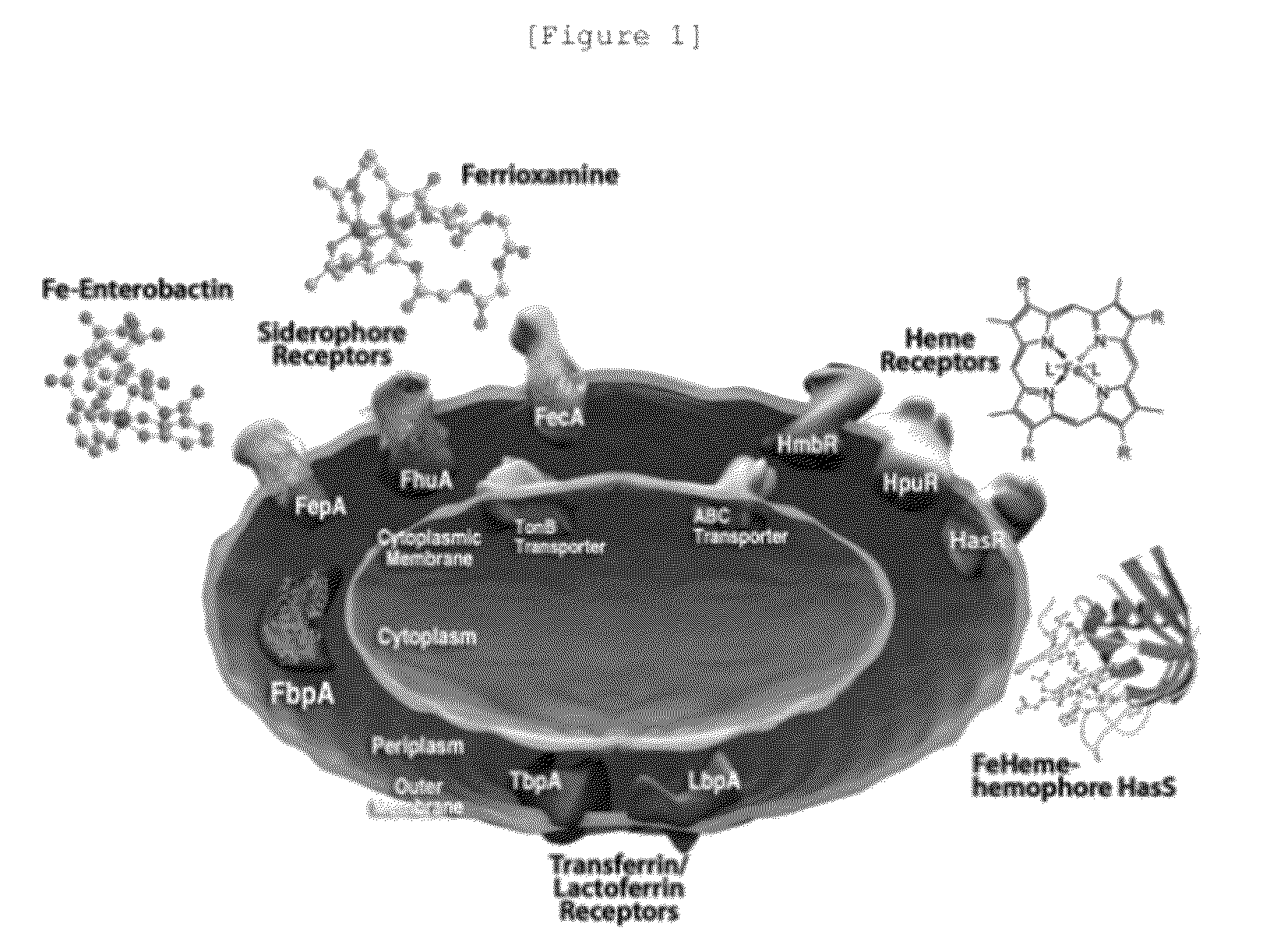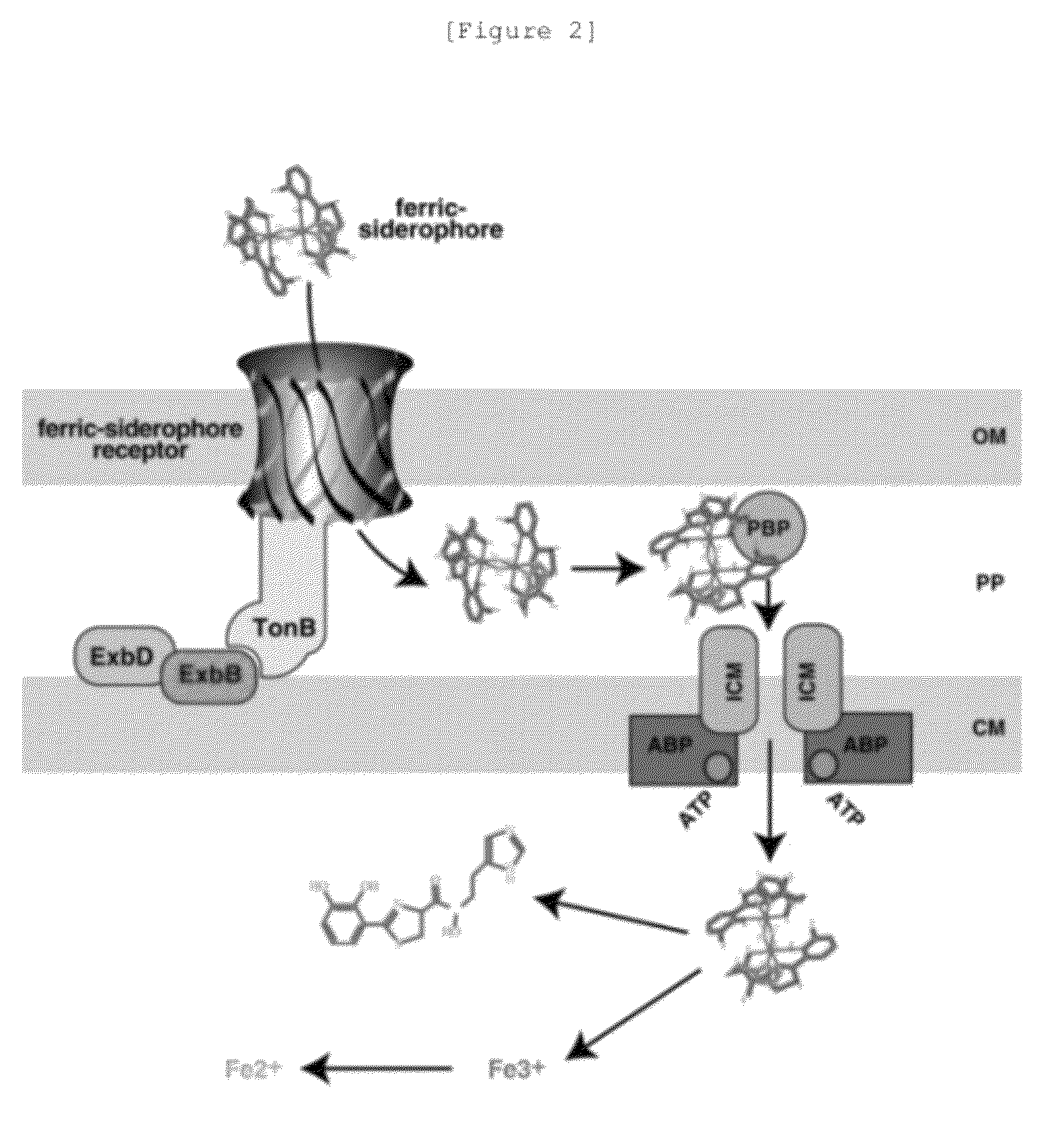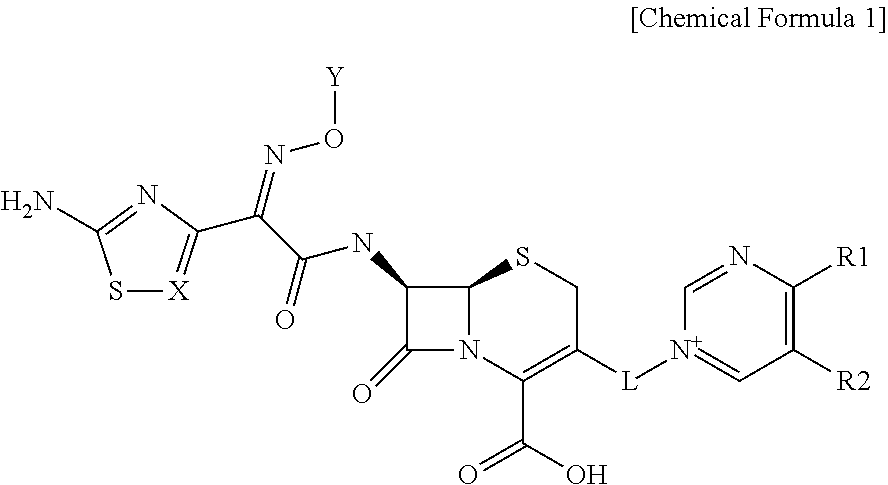Cephalosporin derivatives and pharmaceutical compositions thereof
a technology of cephalosporin and cephalosporin, which is applied in the field of new drugs, can solve the problems of gram-negative researches being overshadowed, the recent discovery of ndm-1 (new delhi metalo-beta-lactamase) is rapidly spreading, and the threat to the international community, and achieves superior antibacterial activity, strong antimicrobial activity, and more effective
- Summary
- Abstract
- Description
- Claims
- Application Information
AI Technical Summary
Benefits of technology
Problems solved by technology
Method used
Image
Examples
preparation example 1
[0103]
1-1) Preparation of Compound I:
[0104]Oxalyl chloride (1.3 mL, 15 mmol) was added to a reaction chamber containing methylene chloride (120 mL) at −78° C. and a solution of dimethyl sulfoxide (2.45 mL, 30 mmol) dissolved in methylene chloride (20 mL) was added. The resulting solution was stirred for 10 minutes at −78° C. A solution of N-Boc-ethanolamine (2 g, 12.4 mmol) dissolved in methylene chloride (20 mL) was slowly added and then triethylamine (8.64 ml, 62 mmol) was added. The resulting solution was stirred for 30 minutes at −78° C. and additional 30 minutes at room temperature, washed with water (100 mL) and saline (100 mL). The organic layer was dehydrated with anhydrous sodium sulfate, concentrated under reduced pressure, and applied to column chromatography (n-hex:EA=3:1˜1:1) to yield Compound I (270 mg (14%)).
[0105]1H NMR (600 MHz, DMSO-d6) δ=7.83 (s, 1H), 7.49 (s, 1H), 6.88 (d, J=5.4 Hz, 1H), 6.36 (br, 2H), 4.81 (br, 1H), 3.13 (m, 4H), 1.39 (s, 9H)
1-2) Pre...
preparation example 2
Compound A-II
[0108]
2-1) Preparation of Compound II:
[0109]Kojic acid (50 g, 0.35 mol) was dissolved in N,N-dimethylformamide (900 mL) and then potassium carbonate (58.4 g, 0.42 mol) and 4-methoxybenzyl chloride (61.7 g, 0.39 mol) were sequentially added. The resulting solution was stirred for 3 hours at 80° C., concentrated under reduced pressure, and slowly added to water (800 mL) to yield a solid. The solid was washed with ether:hexane=1:1 (800 mL) to yield Compound II (90 g (98%)).
[0110]1H NMR (600 MHz, chloroform-d1) δ 7.51 (s, 1H), 7.32 (d, J=8.4 Hz, 2H), 6.90 (d, J=8.0 Hz, 2H), 6.45 (s, 1H), 5.00 (s, 2H), 4.45 (s, 2H), 3.81 (s, 3H)
2-2) Preparation of Compound III:
[0111]Compound II (50 g, 0.19 mol) and hydroxylamine hydrochloride (66.2 g, 0.95 mol) were dissolved in pyridine (620 mL). The resulting solution was stirred for a hours at 70° C.˜75° C., concentrated under reduced pressure, and dissolved in water (350 mL). 6N HCl (pH 1˜2) was added to the resulting solution while stir...
preparation example 3
Compound A-III
[0119]
3-1) Preparation of Compound VII:
[0120]Compound II (1.0 g, 3.81 mmol) is added to 33% methylamine dissolved in ethanol (19 mL). The resulting solution was stirred for 20 hours at room temperature, creating a white solid. The resulting solution was filtered under reduced pressure to obtain the white solid. The white solid was washed with ethanol (50 mL) and ether (20 mL) to yield Compound VII (778 mg (75%)).
[0121]1H NMR (600 MHz, DMSO-d6) δ 7.53 (s, 1H), 7.34 (d, J=9.0 Hz, 2H), 6.94 (d, J=9.0 Hz, 2H), 6.21 (s, 1H), 5.55 (brs, 1H), 4.91 (s, 2H), 4.36 (s, 2H), 3.75 (s, 3H), 3.58 (s, 3H)
3-2) Preparation of Compound VIII:
[0122]Compound VII (778 mg, 2.83 mmol) was dissolved in dimethyl sulfoxide (7 mL) and trimethylamine (1.3 g, 12.7 mmol), methylene chloride (7 mL), sulfur trioxide complex (1.35 g, 8.48 mmol) were added. The resulting solution was stirred for 2 hours at room temperature, diluted with chloroform (150 mL), washed with water (30 mL), dehydrated with anhy...
PUM
| Property | Measurement | Unit |
|---|---|---|
| temperature | aaaaa | aaaaa |
| temperature | aaaaa | aaaaa |
| temperature | aaaaa | aaaaa |
Abstract
Description
Claims
Application Information
 Login to View More
Login to View More - R&D Engineer
- R&D Manager
- IP Professional
- Industry Leading Data Capabilities
- Powerful AI technology
- Patent DNA Extraction
Browse by: Latest US Patents, China's latest patents, Technical Efficacy Thesaurus, Application Domain, Technology Topic, Popular Technical Reports.
© 2024 PatSnap. All rights reserved.Legal|Privacy policy|Modern Slavery Act Transparency Statement|Sitemap|About US| Contact US: help@patsnap.com










